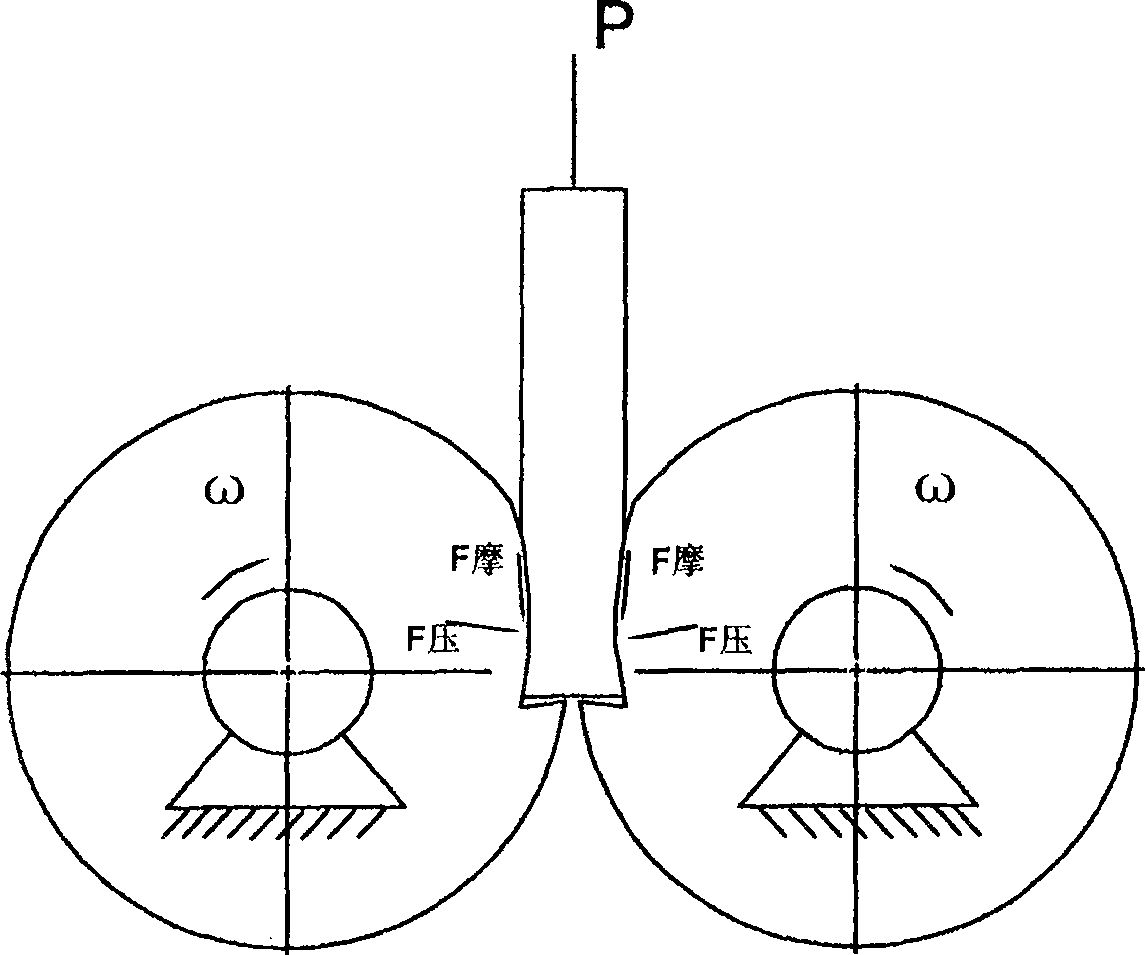Roller type cavity die extrusion molding method
A technology of extrusion forming and rollers, which is applied in the direction of metal extrusion, metal extrusion dies, indenters/punches, etc., can solve the problem of inability to complete the transverse and longitudinal sections of workpieces, increase the limit value of plastic deformation strength, and increase the overall Machine equipment tonnage and other issues, to avoid heat accelerated wear, prolong life, prolong the effect of mold life
- Summary
- Abstract
- Description
- Claims
- Application Information
AI Technical Summary
Problems solved by technology
Method used
Image
Examples
Embodiment Construction
[0035] The present invention will be further described below in conjunction with the accompanying drawings. (Taking flat variable cross-section metal parts as an example)
[0036] figure 1 and figure 2 Shown is a schematic diagram of a roller-type die extrusion forming method of the present invention. A roller-type concave die extrusion forming method adopts a pair of rollers 1, the cavity 2 of the concave mold is opened on the circumferential surface of the two rollers along the axial direction, and at the same time, there are pushing rods 3 and extrusion rods at the entrance of the roller blank. Press cylinder 4, the forming process of its part is:
[0037] (1) The blank 5 is filled in the extrusion cylinder, and the push rod exerts a thrust P on one end of the blank, and the blank is pressed and pushed, and at the same time plays a role of alignment, and the end of the push rod is perpendicular to the auxiliary center line of the two rollers;
[0038] (2) The push rod...
PUM
 Login to View More
Login to View More Abstract
Description
Claims
Application Information
 Login to View More
Login to View More - R&D
- Intellectual Property
- Life Sciences
- Materials
- Tech Scout
- Unparalleled Data Quality
- Higher Quality Content
- 60% Fewer Hallucinations
Browse by: Latest US Patents, China's latest patents, Technical Efficacy Thesaurus, Application Domain, Technology Topic, Popular Technical Reports.
© 2025 PatSnap. All rights reserved.Legal|Privacy policy|Modern Slavery Act Transparency Statement|Sitemap|About US| Contact US: help@patsnap.com



